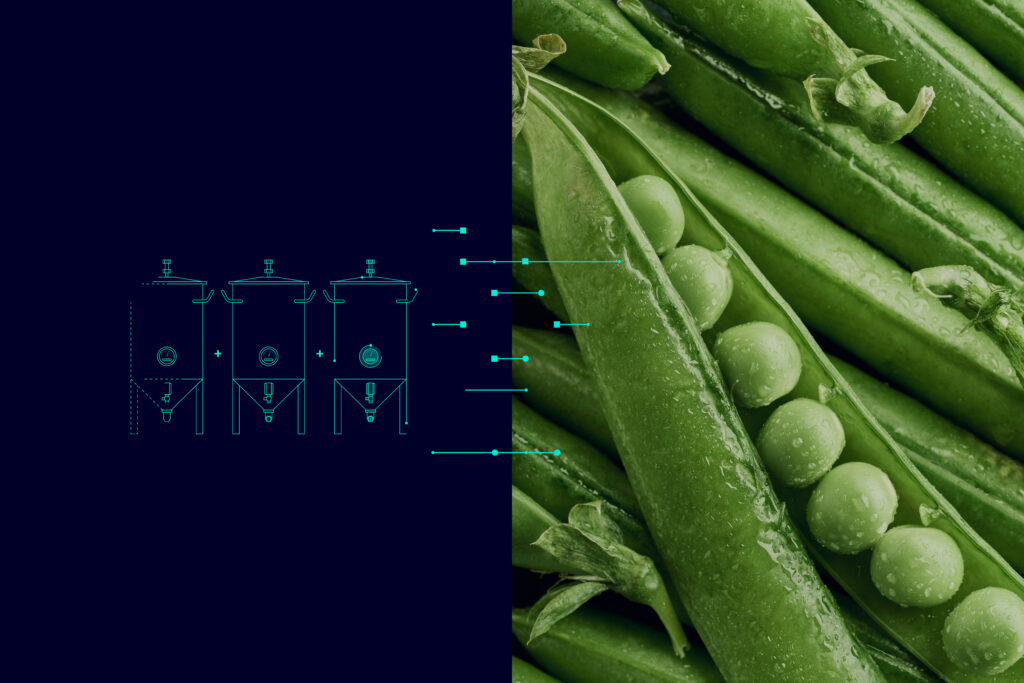Stefania Stoccuto oversees the Global Business Development activities related to Future Food at Siemens. She is responsible for the growth and acceleration of Siemens’ solutions portfolio in the Controlled Environment Agriculture & Alternative Proteins market, by fostering collaborations and developing an ecosystem for leveraging new opportunities.
In this guest post, Stefania discusses how a holistic, end-to-end approach is addressing key challenges in the alternative protein industry, from improving production efficiency to ensuring sustainability.
As consumers increasingly demand more sustainable and ethical food choices, alternative proteins derived from sources like microalgae, mycelium, and cell-based cultures are rapidly gaining attention. To support this transformation, innovative technologies are being deployed to make protein production more efficient, cost-effective, and environmentally friendly. A key player driving this change is leveraging an end-to-end approach to address critical challenges and accelerate the growth of alternative proteins from farm to plate.
Addressing challenges in alt protein production
The production of alternative proteins faces several challenges that require innovative solutions:
Research and development: Continuous improvement in taste, texture, and nutritional profiles is essential to increasing consumer acceptance of alternative proteins. Collaboration with research institutions and industry stakeholders is driving advancements to enhance the appeal and quality of these products.
Scalability and cost-effectiveness: For alternative proteins to replace traditional animal-based options, they need to be produced at scale and at a competitive price point. Expanding production facilities and adopting cost-effective manufacturing methods are crucial to making these products more accessible to a global consumer base.
Regulatory frameworks: A clear and supportive regulatory landscape is critical for fostering consumer trust and supporting market growth. Collaboration with governments and regulatory bodies ensures that labeling, safety standards, and marketing practices for alternative protein products are accurate and transparent.
Infrastructure and supply chain: Robust infrastructure and an efficient supply chain are vital for successfully producing and distributing alternative proteins. Automation and logistics optimization play a significant role in streamlining production processes and ensuring the reliable availability of these products.

Innovative production technologies
Technological advancements are central to optimizing alternative protein production. Some of the key innovations from Siemens include:
AI and analytics: Artificial intelligence and advanced analytics help to optimize production processes and improve product quality. By analyzing real-time data, inefficiencies can be identified, maintenance needs predicted, and productivity increased across the manufacturing process.
Process control: Achieving consistent quality is a top priority. Modern process control systems allow precise monitoring and regulation of production parameters, ensuring uniform protein extraction and maintaining the desired nutritional profile while minimizing waste.
Digital twin: Digital twin technology allows manufacturers to simulate and optimize production processes before physical implementation. This technology helps improve resource allocation, reduce downtime, and enhance overall productivity.
Energy efficiency: Reducing the environmental impact of production is at the heart of the alternative protein movement. Energy management systems and renewable energy solutions help reduce carbon emissions and lower operational costs. The integration of energy-efficient technologies enables manufacturers to create more sustainable production practices.
Standardization and OT/IT integration: For scalable and efficient production, standardized solutions and the integration of Operational Technology (OT) with Information Technology (IT) are crucial. These systems enable seamless communication between production processes, improving control and visibility across the entire production line. Manufacturers can visualize their operations within an overarching production management system, making it easier to monitor and control every stage of production in real-time. This approach ensures production scalability, better performance optimization, and allows manufacturers to meet growing demand with ease.

Paving the way for sustainable protein production
With an end-to-end approach, the path is being cleared for more sustainable and efficient alternative protein production. By supporting research and development, scaling up production, collaborating on regulatory frameworks, and providing innovative infrastructure and technological solutions, the industry is overcoming its challenges. Ongoing advancements in production processes, such as the integration of OT/IT systems and real-time visualization, are enhancing productivity and ensuring that alternative proteins are becoming a viable alternative to animal-based products.
In order to achieve consistent transparency and enable standardization, collaboration and co-development play a key role. Our ambition is to create a powerful ecosystem of partners who can jointly accelerate the digital transformation. By working together, we can drive innovation, share best practices, and create a more sustainable and inclusive future for protein production.
As the demand for sustainable food choices continues to rise, these innovations and collaborative efforts play a crucial role in shaping the future of food, making plant-based alternatives a mainstream option for consumers worldwide.




